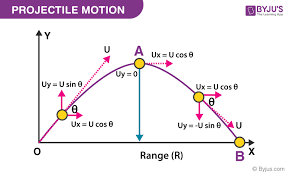Motion in One Dimension - Topic 2.1
Bite-sized Motion in one Dimension Study Notes for IB Physics HL/SL
Table of Contents

Key point
- All Kinematic Quantities describe motion and depend on the frame of reference.
Kinematics – the study of motion. In order to study motion, we must first define some key quantities that describe motion in all its varieties.
- Position – the place where an object is relative to other objects (Vector Quantity)
- The Frame of Reference must be defined (or implied) in order to figure out an object’s position
- Time – how long does it take to perform a certain action?

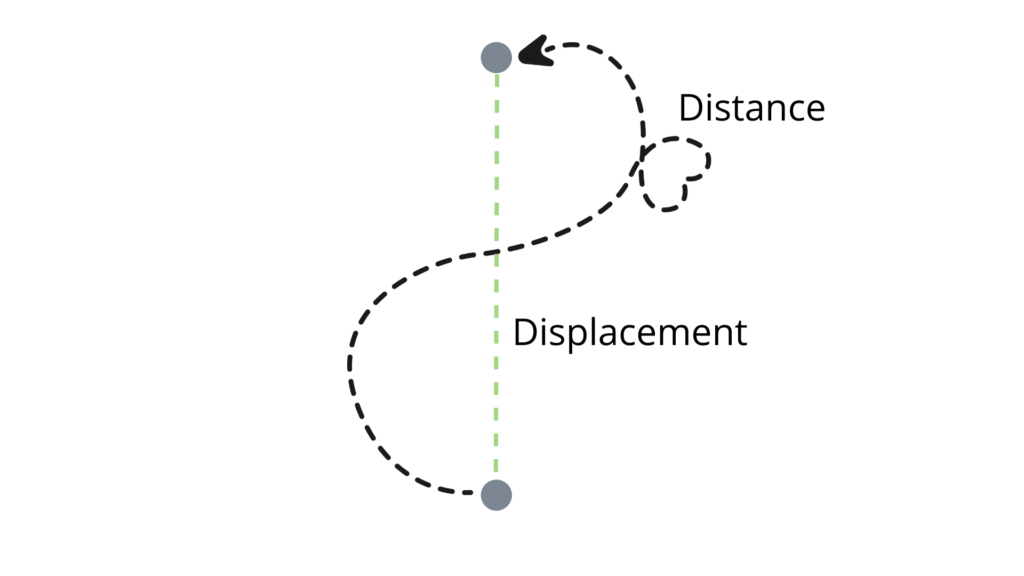
- Displacement is the change in position. Displacement describes “how far, compared to its initial position, a given object has come”. (Vector Quantity)
- Distance is the length of the path followed. Distance describes “how much ground an object has covered” (Scalar Quantity)
- Velocity is the change in position over the change in time. Velocity is displacement over time. (Vector Quantity)
- Speed is the length of the path followed over time. Speed is the distance over time. (Scalar Quantity)

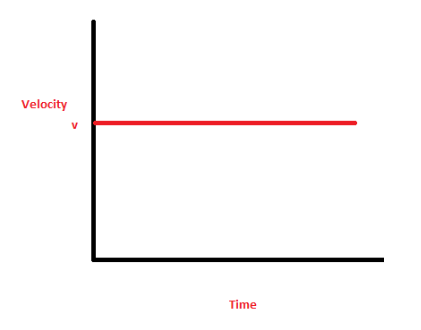
In uniform motion the speed/velocity is constant. (by definition)
Suppose that at t = 0, s = initial position
and that at t = something, s = final position.
Then we have the following definition for velocity:

Key points
- In uniformly accelerated motion the velocity is changing
- Acceleration is the rate of change of velocity
In uniformly accelerated motion the velocity is non-constant.
- The graph of velocity vs. time is a non-horizontal straight line.


Acceleration is the rate of change of velocity.
- If velocity is not changing, then there is no acceleration
- Acceleration is a vector quantity
Suppose we choose a time interval from t = 0 to some arbitrary time t later.
Let the velocity at time t = 0 (initial velocity) be u and the velocity at time t be v (final velocity). Then we get the following expression for acceleration:

Formula Booklet
- Rewriting the expression above leaves us with the formula booklet expression.
- The final velocity is equal to initial velocity plus the acceleration the object experienced during a given time interval
Key point
- Instantaneous velocity is the velocity of an object at an instance of time
In uniform motion the velocity is constant. In non-uniform motion the velocity is non-constant.
- The instantaneous velocity – the velocity at any instance of time – is different than average velocity.
- Instantaneous velocity is a vector quantity
- The magnitude of the instantaneous velocity is the instantaneous speed.
- Instantaneous velocity is what your car’s speedometer measures.
- Instantaneous velocity is a vector quantity
- Mathematical representation of the instantaneous velocity (don’t need to know)
- Calculation of instantaneous velocity requires calculus.
Frequently Asked Questions:
- How to find/calculate instantaneous velocity?
- Graphically: draw a tangent line at that point of the velocity time graph.
- The slope of the tangent line is the instantaneous velocity of the object at that point
- Mathematically: you cannot use the traditional kinematic equations.
- Requires calculus (see video above).
- Graphically: draw a tangent line at that point of the velocity time graph.
- Can instantaneous velocity be negative or zero?
- Yes! The directional properties of instantaneous velocity are the same as that of regular velocity.
- What is the difference between instantaneous velocity and instantaneous speed?
- Instantaneous speed is the absolute value of instantaneous velocity.
- Does not have direction.
Key point
- The four fundamental kinematic equations can be used to solve for the basic kinematic quantities of almost every motion problem
Defining Variables:
- u is the initial velocity.
- v is the final velocity.
- a is acceleration.
- t is time.
- s is displacement
- The i subscript is for initial; f for final.
In most kinematics problems, you will be tasked with finding the value of one of these variables with the equations below.
- More complex scenarios ask you to find more than one of these variables.
Formula Booklet
- This equation uses the final velocity given the initial velocity, the acceleration, and the time interval
- Often the initial velocity is 0.
- Derivation of the equation
- The area under a velocity vs. time graph is the change in position (displacement)
- The gradient of a velocity vs. time graph is its acceleration.
- The y-intercept is the initial velocity.
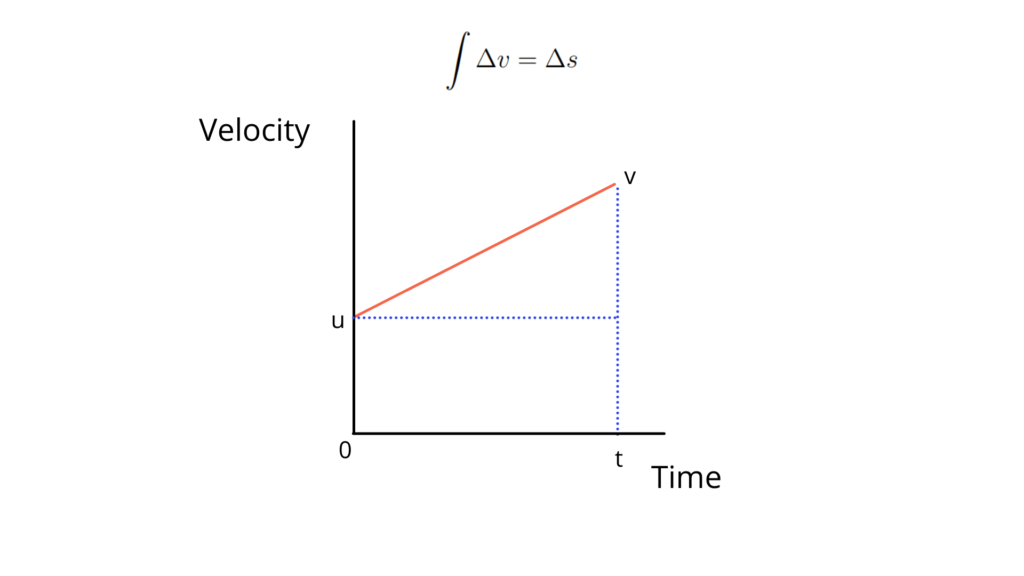

Formula Booklet


- Solving for the area of the velocity vs. time graph we get following equation:
- Remember that the initial displacement is often 0
- Notice how acceleration is not needed for this equation
- Use whenever acceleration is not given.
- Through combining the first two formulas and some basic algebra we get following formula:
- Remember that the initial velocity is often 0
- Notice how final velocity is not needed for this equation.
- Use when final velocity is not given.
Formula Booklet
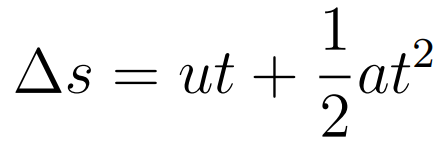

Formula Booklet


- Through combining the first two formulas and some basic algebra we get following formula:
- Remember that the initial velocity is often 0
- Notice how time is not needed for this equation
- Use when time is not given.
Key points
- The acceleration of free fall is g = 9.8ms-2
- The acceleration is roughly the same at all points close to the earth.
As discussed in a previous notes section, acceleration occurs when a force is applied to an object. This includes the force of gravity that the earth exerts on any object in its gravitational field.
- What is the value of acceleration due to gravity? The gravitational acceleration is 9.8 ms-2.
- In Paper 1 gravity is assumed to be 10ms-2
- The variable for gravitational acceleration is g, rather than a.
- Often, it is not given, rather, the student is assumed to know it.
- The gravitational acceleration always points downward (towards the earth’s center/surface)
- The gravitational acceleration is only 9.8ms-2 on the earth.
- Different planets have different gravitational accelerations, due to their different masses and sizes affecting the properties of their gravitational fields.
Key points
- Projectile motion is the motion of an object in the air that is only subject to gravitational acceleration
- Independence between horizontal and vertical motion
Projectile Motion is the motion of an object in ‘free’ air that is only subject to gravitational acceleration.
- Horizontal and vertical components (acceleration or velocity) are independent
- Assume ball a is dropped (with no vertical component of velocity) and ball b is launched horizontally (with no vertical component of velocity), then they fall the same distance in the same time
Not in Formula Booklet but important
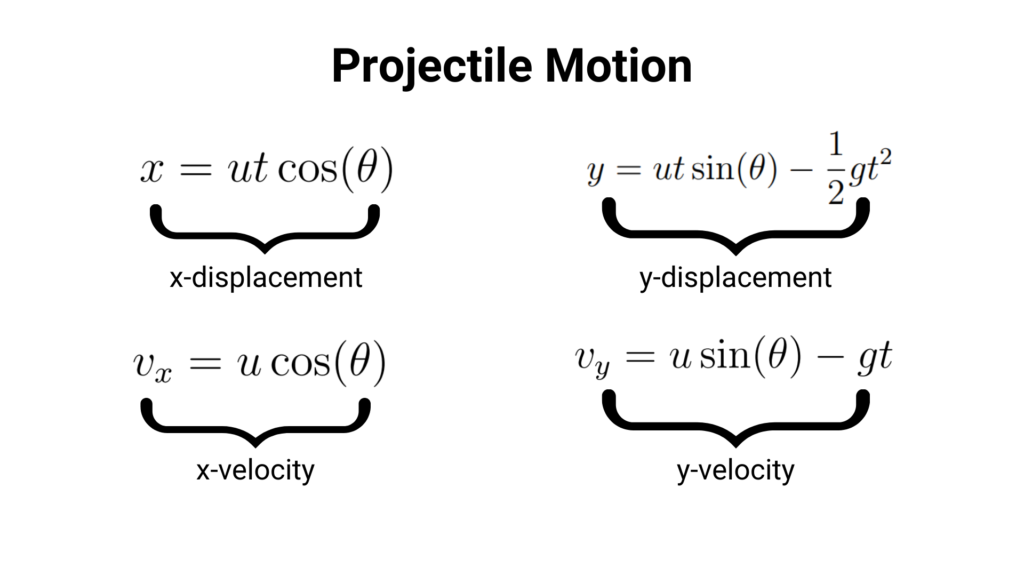

The Kinematic Equations are the same – but used for each component (vertical/horizontal)
- At the peak of a projectile motion path, the potential energy is maximum and the kinetic energy is 0
- Vertical acceleration is always the same (or it will be explicitly stated to be different)
- What goes up must come down
- Projectile motion paths are symmetric
Key point
- When a body moves through a fluid it experiences fluid resistance force
Fluid resistance force is the force a body experiences when traveling through a fluid.
- Directed opposite to the velocity
- Air resistance is a type of fluid resistance
- Reality vs. Theory (in general air resistance is neglected in IB Questions. If not, then it’s stated explicitly that it’s not)
Not in Formula Booklet but important
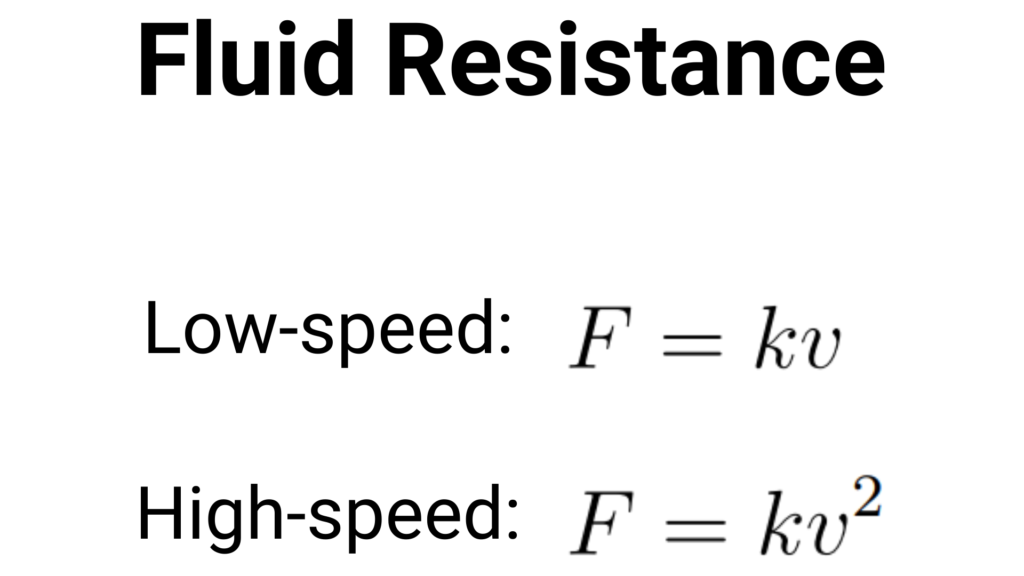

Fluid resistance equations
- k is a constant – depending on the fluid resistivity
- There is no limit for which the high-speed formula is used over the low-speed formula. It depends fully on the question and common sense
- As higher the velocity – as higher the resistive force
Suppose we drop a ball from some height.
- The ball’s speed increases due to the gravitational acceleration (weight)
- As the speed increases, the fluid resistance increases too (in this case air resistance)
- Fluid resistance increases until it equals the weight of the ball
Terminal speed formula


Worksheet
Motion in One Dimension Worksheet with Answers
Questions and Answers
PPT
Motion in One Dimension PPT
Power Point Presentation
Subscribe to the Inertia Newsletter
IB News, Covid-19 Updates, Deadlines, Tips and Tricks, and Hundreds of Free Resources are Awaiting You!
Features
- Study Notes
- Thousands of IB Questions
- Detailed Answers
- Ask-A-Question System

